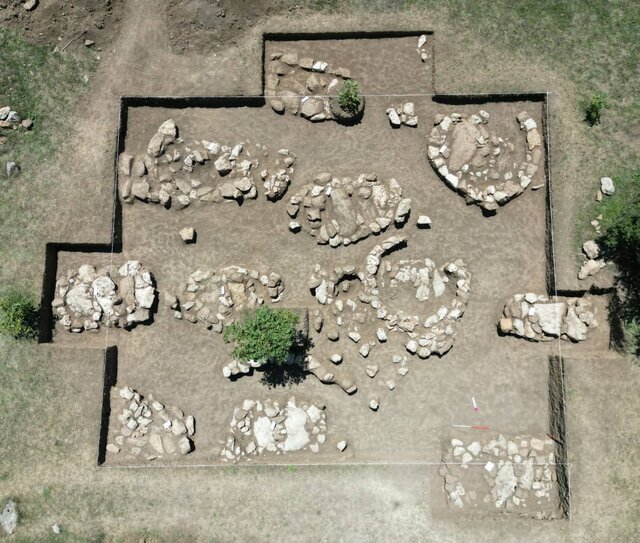Archaeologists resume excavation at 4,000-year-old site in Mazandaran province

TEHRAN – An archaeological team has resumed excavation at Izgam-Dasht, a site with an estimated 4,000-year history in the western part of Mazandaran province, northern Iran.
The site has previously yielded 17 ancient graves, Mohammadreza Khalatbari, the head of the archaeological team, told ISNA on Monday.
“The site has undergone two previous excavation seasons. The first significant findings date back to 1396 (2017) when archaeologists uncovered 17 ancient graves, confirming that the site dates back to the Bronze Age.”
Izgam Dasht is located in Jannat Rudbar Plain within the Ramsar county of Mazandaran. The current excavation began under the authorization of the Research Institute of Cultural Heritage and Tourism and is scheduled to continue until September 21.
Izgam Dasht Cemetery is one of the historical cemeteries of Mazandaran, with initial exploratory excavations carried out in 1989 as part of an emergency research and identification program, the archaeologist explained.
He noted that the current year's research aims to delineate the site's boundaries, conduct archaeogeophysical studies, map the area, and prepare the documentation necessary for registering this valuable site on the National Heritage List.
Khalatbari, who is also a member of the faculty at the Archaeology Research Institute, noted that Izgam Dasht was first identified in 1989 during an emergency survey due to its significant historical value across various civilizational periods. Despite its importance, further excavation was delayed until 2017.
During the first excavation season in 2017, carbon-14 dating revealed that artifacts from the site dated back to the Middle Bronze Age (2000-1600 BC), the Iron Age (1500-500 BC), as well as historical and Islamic periods. The results of this research were published in a book titled "Ramsar in the Course of History."
The second season of excavation in 2023, supported by the Research Institute of Cultural Heritage and Tourism and Seyyed Shamseddin Hosseini, the representative of Tonekabon, Ramsar, and Abbasabad in the Iranian Parliament, has led to the development of another book, "The Amards: The First Indigenous Inhabitants of Western Mazandaran," which is currently in preparation.
Khalatbari added that the team comprises experts in various fields, including specialists in different archaeological periods, archaeogeophysicists, physical anthropologists, architects, surveyors, and designers.
These efforts are expected to lay the ground for establishing the first site-museum in western Mazandaran, he added.
Izgam Dasht is part of a broader network of archaeological sites in Mazandaran, a region known for its rich cultural history dating back to ancient times. The ongoing excavations not only aim to uncover more about the region's ancient inhabitants but also to preserve and promote its cultural heritage through the establishment of a site museum, which will offer insights into the lives of the region’s early settlers.
AM
Leave a Comment